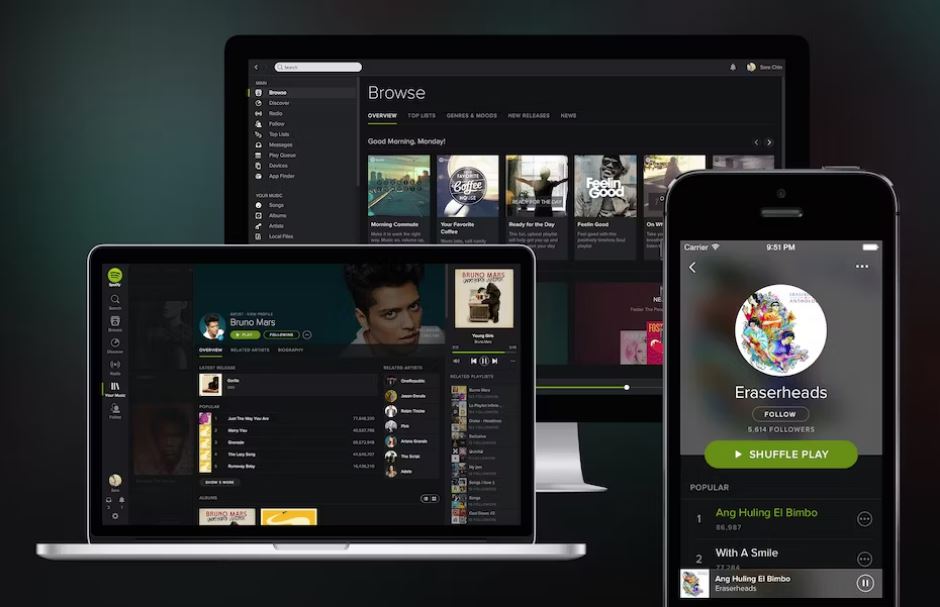What Is the ‘Will’ System – and Why Does It Matter?
Imagine a company where every internal transaction carries a price tag, from booking a meeting room to asking a colleague for help. This is reality at Disco Corp, a Japanese semiconductor equipment maker that implemented a radical internal economy called “Will.” In this system, employees choose their own tasks, “bill” each other for services, and get paid in an internal currency (appropriately named Will) that converts to real money as a bonus every quarter. Essentially, each employee operates like an independent business owner within the company.
Under the Will system, teams and individuals trade services in a company-wide marketplace. For example, a sales team pays factory workers (in Will currency) to produce an order; those factory workers pay engineers (in Will) to design a new product. Even resources like conference rooms, desks, or a spot in the office are “priced” in Will. When a sale is finally made to an external customer, the Will flows back through all contributors in the chain. At quarter’s end, employees with surplus Will see it converted to Yen as a bonus payout. Conversely, inefficient behaviour, like hoarding inventory or logging unnecessary overtime, incurs Will penalties, nudging people away from wasteful habits.
Why does this matter? Because Disco’s experiment has delivered striking results. The company’s operating profit margins nearly doubled after introducing Will, from about 16% to 26% in eight years, and continued climbing to the mid-30s in recent years. Its share price quadrupled during the first years of the system. Disco now boasts a dominant position (over 70% global market share in its niche) and has even been recognised as an ideal workplace in Japan. In short, the Will system appears to have aligned employees’ efforts with company performance in a powerful way, eliminating waste and boosting innovation. No wonder dozens of other organisations have knocked on Disco’s door to learn from this “free-market” approach to management.
Yet, tellingly, none of those other companies have copied the blueprint so far. That paradox, great results at Disco, but hesitation elsewhere, makes the Will system a fascinating case study. Is it a glimpse of the future of work, or an extreme outlier? As Irish and multinational businesses look for new ways to empower teams and drive efficiency, Disco’s story offers both inspiration and caution. It forces us to ask: What happens when you run a company with no bosses, no fixed roles, and an internal market economy instead? The sections below explore this question from multiple angles, freedom vs. control, personality impacts, diversity, culture fit, and even the digital tools that make such a system possible, all with an eye on what it could mean in an Irish business context.
Autonomy Unleashed or Control Rebranded?
One of the biggest selling points of Disco’s Will system is autonomy. The company deliberately created what its program designer, Toshio Naito, calls “a free economic zone, just like what exists outside the company”. “Work should be about freedom, not orders,” Naito proclaims. Indeed, Disco employees have enormous latitude to decide what to work on and with whom. There are daily auctions of work assignments where team members bid on tasks they want to tackle. There’s even an internal idea tournament, nicknamed the “Colosseum”, where any employee can pitch a profit-boosting idea to an audience of peers and executives, who then bet Will currency on the best proposals. In this gladiator-like forum, the crowd’s verdict determines which ideas move forward, not a boss’s decree. By design, hierarchy takes a back seat to a more democratic, market-driven allocation of work.
On the surface, it sounds like autonomy unleashed. Employees effectively act as freelancers within the company, free to seek out projects that interest them or even invest their Will in ideas they believe in (Disco has an internal crowdfunding platform for new business ideas). Traditional managers don’t “assign” tasks in the usual sense; instead, managers propose tasks with a budget of Will, and employees choose whether to bid on them. If a manager is ineffective or the project unappealing, people can literally walk away: “workers are free to move to other teams”, leaving bad bosses without staff. This dynamic flips the typical power balance and ostensibly hands control to individual employees.
But is this true freedom or simply control rebranded? It’s a bit of both. Instead of being micromanaged by a human boss, employees at Disco are managed by an invisible hand of economic incentives. As Naito explains, “Economic forces are doing all the things managers used to spend time on.” In other words, the company’s rules and internal market mechanisms guide behaviour in place of direct supervision. If you want a conference room for a meeting, you “feel the pain” of paying 100 Will (about $100) per hour, which discourages frivolous meetings: “People really cut back on useless meetings,” one employee observes approvingly. If you work overtime, you incur a Will penalty, which nudges you to go home on time. The autonomy is real, but it operates within a tight web of incentives and peer feedback. Essentially, Disco coded the priorities of management into a game. It’s “extreme gamification at work – creative but scary,” as one commentator put it, noting that moderation is key in such an approach.
Western parallels bear out the double-edged nature of radical autonomy. Online retailer Zappos famously eliminated traditional managers in favour of Holacracy, a self-management system. The result was “a radical experiment…to end the office workplace as we know it,” but also a lot of confusion; some employees “weren’t sure how to get things done anymore” without clear authority. Many opted to leave rather than live in that boss-less new world, and Zappos had to course-correct. The lesson? Freedom without clarity can be chaos. Similarly, Disco’s internal market provides structure through algorithms, it gives clarity on the value of actions (in currency terms), even as it frees people from direct orders. It’s a different flavour of control: more quantitative, perhaps more merit-based, but control nonetheless. Every system has rules; Disco’s rules just happen to be market rules.
For Irish companies, this raises an interesting question: would employees feel more empowered by such a system, or more pressured? An internal economy might liberate people from bureaucratic approvals and allow them to pursue initiatives proactively. But it could just as easily feel like a never-ending performance review, with “the market” constantly judging your every move. The balance between autonomy and alignment is critical. Disco’s approach suggests it’s possible to replace top-down control with a network of incentives, yet it requires a high degree of trust in employees’ ability to handle that freedom responsibly. Not every organisation (or workforce) may be ready to walk that tightrope.
The Personality Question: Who Thrives, Who Struggles?
A system like Will doesn’t suit everyone. At Disco, the introduction of internal free-market principles created an environment where certain personalities and work styles clearly thrive, and others struggle or even opt out. Understanding who wins and loses in this setup is important for any company considering elements of it.
Firstly, who thrives in Disco’s environment? Observers note that those who have an entrepreneurial mindset tend to excel. Employees are essentially running their own mini-businesses (of one), so people who enjoy taking initiative, competing in a friendly game for rewards, and leveraging their skills in different areas benefit the most. One Disco engineer in Hiroshima described how “it’s become like second nature” once you adapt, “being able to measure everything creates more interest and confidence” in your work. The transparency of your contributions (all scored in Will) can be highly motivating if you’re the type who likes to see tangible results and get rewarded for going the extra mile. For example, an enterprising software engineer can earn extra Will by offering coding help to another team in need. People who are proactive, multifaceted, and comfortable networking across departments take to this system like fish to water. In essence, the “free agent” personality, one that enjoys autonomy, quick feedback, and even a bit of friendly competition, is likely to thrive.
Now, who struggles or might feel alienated? It turns out some highly talented folks don’t thrive in this atmosphere. Disco saw some engineers quit because the system “detracts from their ability to focus purely on research.” These were likely people who value deep, long-term work over short-term gains. In a Will-based economy, if a project doesn’t show immediate payoff, it might get less attention, which frustrates those who are more R&D-oriented or who prefer to perfect technology away from the spotlight of daily auctions. Similarly, individuals who dislike constant competition or self-promotion may find the environment draining. One can imagine that introverts or those who simply want stability could be uncomfortable when every day feels like an open bidding war for tasks. The Bloomberg report on Disco noted that some employees were “driven away by the never-ending pressure to perform to get a bonus”. If you’re the type who just wants to do your job quietly and not think about “earning” your right to use a conference room or worrying about quarterly Will balances, this system might feel overwhelming.
Another aspect is collaboration vs. individualism. In theory, Will is meant to foster collaboration (you literally pay colleagues to help you, which incentivises helping each other). And indeed, there are heartening examples: a parent who wants to leave early to see their child’s game can pay a teammate in Will to finish a report for them, a mutually beneficial arrangement. However, more traditionally team-oriented personalities might bristle at having to put a price on helping. Some people help colleagues because that’s the culture; if it suddenly becomes a paid transaction, it could feel transactional rather than collegial. Those who thrive likely embrace a pragmatic, results-driven culture, whereas those who prefer altruistic team spirit could feel something vital has been lost.
It’s also worth considering experience and seniority. A newcomer or junior employee might struggle to navigate an internal market without mentorship or guidance, they might not even know what tasks to bid for. In a conventional structure, a manager might coach them; in Disco, one must be a self-starter. Personalities that need more guidance or that take time to ramp up may need extra support in such a free-form system.
For Irish and European multinationals, this personality question is key. Our workplaces value teamwork and inclusivity, sometimes more so than overt competition. A system that inherently rewards the loudest or fastest may inadvertently sideline the quiet, steady performers. Conversely, it might elevate hidden talent that wouldn’t shine in a rigid hierarchy. Before importing any aspect of Will, leaders should ask: Do our people have the appetite for this level of self-direction? And how do we ensure we don’t lose those great employees who thrive under more structured or collaborative settings? A balance might be needed, e.g., voluntary pilot programs or hybrid models, to accommodate different personalities. After all, a company of only one “type” of personality isn’t ideal for diversity of thought, which brings us to the next dilemma.
The Diversity Dilemma: Meritocracy or Monopoly?
Proponents of Disco’s internal economy might hail it as a pure meritocracy. In theory, when every contribution is assigned a value in Will, performance becomes highly transparent. High performers earn more Will (and thus more bonus), regardless of rank or tenure. Good ideas get funded by peers in the Colosseum, regardless of the presenter’s title or background. On the face of it, the system doesn’t care who you are, only what value you create. In a sense, Will is the great equaliser: everyone plays by the same economic rules, and “politicking” is replaced by measurable results.
However, meritocracy in its ideal form is hard to achieve in any human organisation, and there’s a fine line between meritocracy and the emergence of monopolies or inequalities. One risk is that the Will system could create widening gaps between employees. Just as in a real free market, some individuals accumulate great wealth, within Disco, some employees likely accumulate large Will balances (i.e. internal wealth) while others earn minimal beyond their base salary. Over time, could an internal elite form – those with lots of Will who can “invest” in the best projects and thus get even more return, much like the rich getting richer? The Bloomberg report hinted at this, noting that “big pay-outs aren’t guaranteed” and some people might endure high pressure without much benefit, suggesting not everyone wins equally. If certain roles (say, sales or product leads) inherently generate more Will, the gap between, for example, a star engineer and a back-office staffer could become demotivating. Inequity can breed resentment, even if it stems from a seemingly fair system.
Another aspect of diversity is diversity of thought and background. An internal market might inadvertently favour majority opinions or popular ideas. In the Colosseum battles, the idea that wins is the one that gets the most Will backing from the crowd. That’s democratic, but what about contrarian ideas that are brilliant but initially unpopular? They might fail to get funding if they don’t sound immediately convincing in a one-minute pitch. There’s a risk that a homogeneous group could keep voting for similar ideas, creating a sort of monoculture of ideas. Similarly, employees who are more assertive in presenting ideas (or simply better connected within the company network) might always win the bets, while more diverse or unconventional voices might struggle to gain support. Over time, could this crowd-based approach stifle true diversity and inclusion? It’s an open question. The system rewards merit as perceived by the internal market, but an internal market can have biases just like any group of humans.
Disco’s experience also revealed a cultural diversity challenge. Naito admitted it “took about five years for staff in Japan to adjust” to Will, and that “workers in the U.S. and China still haven’t fully embraced the approach.” In a global company, different cultural backgrounds may respond very differently to a hyper-meritocratic system. Some cultures value collective harmony over individual competition; others might relish competition but chafe at the communal aspects. In Disco’s case, even within the same company, adoption has varied by country. That highlights how a “meritocratic” system might not travel well without adaptation, as it can exclude those who don’t culturally fit the mould of the ideal participant.
So, is Will a meritocracy or a potential monopoly? The truth is, it harbours elements of both. It unquestionably shattered some old hierarchy (Disco’s leadership credit Will with making individual performance visible and eliminating bureaucratic waste). Yet we must be mindful: a system can be 100% fair in design and still produce unequal outcomes. Irish companies pondering this should consider their own diversity and inclusion goals. If the goal is a more merit-based culture, certain features (like transparent reward systems or internal talent marketplaces) could help. But they should be introduced alongside safeguards to ensure one group doesn’t dominate, for instance, monitoring for unintended biases in who gets opportunities or ensuring that quiet contributors are recognised, not just the loud ones. True meritocracy values diverse talents and viewpoints, whereas an unchecked internal market could, if not carefully managed, marginalise those who don’t “play the game” in a narrow way.
Culture Clash: Would It Work in Ireland?
Even if the Will system works in Japan, would it work in Ireland? Ireland’s business culture, while modern and innovative, has its own distinct characteristics. A drastic experiment in workplace economics might face scepticism or even resistance for cultural reasons.
Japanese corporate culture vs. Irish culture: Interestingly, Disco’s model is atypical even in Japan, a country traditionally known for hierarchy and lifetime employment. It took a visionary leap (and perhaps a touch of desperation to eliminate inefficiency) for a Japanese CEO to green-light this radical approach. In Ireland, workplaces tend to be more informal and less hierarchical than traditional Japanese firms, but we also value collaboration, fairness, and clarity. Irish employees are accustomed to managers as coaches or mentors (especially in multinationals and tech firms where flat-ish structures are common, but not this flat). Removing bosses entirely and introducing a play-money economy might strike Irish workers as strange or even gimmicky at first.
One major consideration is communication style. Irish workplaces often pride themselves on open communication, but also a bit of humour and human touch, qualities that can get lost if everything is reduced to numbers. There’s a risk that a system like Will could feel cold or overly formal (“Sorry, I can’t help you with that report unless you pay me 50 Will”). What might be accepted in one cultural context could be misinterpreted in another. For instance, an Irish sales team being told they have to pay their colleagues who come into the office (as Disco’s salespeople did during the pandemic)might initially react with, “Are you having a laugh?” It’s just not how we typically frame teamwork here. Once explained (as a fairness mechanism), some might come around, after all, Irish fairness sensibilities are strong, but the framing and communication would be critical to avoid a culture clash.
Work-life balance expectations also differ. Irish law and culture put emphasis on reasonable working hours and employee welfare. Disco’s system does aim to reduce overwork (through penalties for overtime), aligning with work-life balance goals. That could actually resonate in Ireland, where many companies are actively trying to prevent burnout. However, if employees feel constantly “on” because they’re essentially running their own shop within the firm, that could conflict with the Irish/European ethos of not letting work dominate your life. It’s notable that Disco had to implement guardrails to curb overwork, and even then, it took years to adjust. Irish employees and perhaps unions might scrutinise such a system to ensure it’s truly protecting well-being and not just squeezing more productivity out of staff via competitive pressure.
Trust in management and change appetite are other factors. Irish businesses, particularly multinationals, have embraced new agile ways of working (e.g., the Spotify squad model in tech teams, which emphasises autonomy and was adopted by many here). But these changes usually happen incrementally and with lots of employee input. A sudden shift to an internal currency would be a massive change. One could imagine scepticism: “Is this just a way for management to offload responsibilities onto us?” or “Will my base pay suffer if I have to earn part of it in Will?”, even if the company assures that base salaries remain and Will is bonus, the understanding needs to be there. Change management would be a huge undertaking.
Moreover, Irish regulatory and legal considerations can’t be ignored. If an internal currency effectively changes how pay is determined, would it run afoul of any labour regulations or require reworking contracts? Irish law might not explicitly forbid internal bonus currencies, but it’s an extra layer of complexity (tax treatment of those bonuses, etc., would need clarity). In Japan, Disco navigated that, but any Irish firm copying it must do homework on compliance.
That said, aspects of the Will system could align well with Ireland’s forward-looking business culture. Ireland loves a good innovation story, and Disco’s tale is certainly that. If framed as empowering employees and fostering entrepreneurial spirit, it could appeal to the many multinational tech employees who are used to hackathons and flexible roles. The key is to adapt, not just adopt, understanding the local mindset. We already see Irish companies experiment with self-managed teams and profit-sharing, which are conceptually related. But an outright internal free market would likely need to be piloted carefully, perhaps in a single department, to gauge cultural fit. As one management scholar quipped in the FT, running a company as a perfect market is intriguing, but “can you really?” It tests some deeply held assumptions about workplace culture.
In summary, while Irish businesses are no strangers to autonomy and innovation, the cultural translation of Will would be non-trivial. It would require clear communication that this is about trusting employees, not abdicating leadership. It would also require sensitivity to how Irish teams bond, through shared purpose and camaraderie, ensuring that those human elements are preserved and not replaced entirely by transactional relationships. The idea isn’t impossible to imagine in Ireland, but it would certainly evolve into an Irish-accented version if it were to work at all.
Could This Model Enhance or Damage Company Culture?
When considering an upheaval of traditional structures, a central concern is the impact on company culture. Would implementing something like the Will system create a culture of ownership and innovation, or would it breed stress and internal rivalry that ultimately damages morale? Disco’s experience provides arguments for both outcomes, making it a nuanced case.
On the “enhance” side of the ledger, Disco’s leaders tout that Will has made every individual’s contribution visible and valued, which can be highly empowering. People have tangible evidence of how they impact the bottom line – a direct line of sight from their effort to the company’s success. This kind of line-of-sight is something many companies struggle to give employees. At Disco, if you come up with an idea that saves money, you might literally see the payoff in your Will account by quarter’s end. That immediacy can create a strong sense of ownership. In fact, Disco’s internal slogan could well be “run it like you own it,” because employees must think in terms of costs and returns like mini-CEOs. Such a culture can be energising and entrepreneurial. One outcome: employees started cutting waste and unnecessary activities on their own. “Assignments that don’t attract any bids often turn out to be unnecessary work,” one analysis noted. Imagine a culture where bureaucracy and pointless reports simply fade away because no one volunteers to do them; that’s a cultural win in terms of efficiency and focus.
Moreover, transparency and fairness can be cultural pluses. With Will, favouritism is harder to hide, everything has a price and everyone can see (at least in their team context) who’s contributing what. It’s telling that Disco has been consistently rated a top workplace in Japan. One might assume a cutthroat environment, but employees who have adapted emphasise a positive: “the value placed on their efforts and their own time” is higher now. In other words, they feel less taken for granted. The culture rewards proactivity, skill-sharing, and innovation, all culturally reinforcing good behaviours. Even the meeting room charge, while it sounds draconian, sends a cultural signal that people’s time is precious. As Hiroyuki Suzuki, a Disco employee, said about the meeting fees, “Everything has a price, which helps keep workers focused on the bottom line.” And the result: “People really cut back on useless meetings.” That suggests a culture that respects everyone’s time, surely a welcome change in most corporate environments drowning in meetings.
On the flip side, if mismanaged or imposed on an unwilling workforce, such a model could damage company culture. The most obvious risk is fostering a hyper-competitive atmosphere that undermines trust. If employees start seeing each other primarily as market competitors or cost centres, the sense of team could erode. One could envision situations where colleagues say, “That’s not my job (unless you pay me),” which is not a collaborative vibe. The social glue of a company, mission, shared values, camaraderie, might weaken if transactions replace informal cooperation. Disco’s Naito addressed this concern, noting that the “ruthlessness of a hardcore free-market approach is diluted in a setting where people work side-by-side”. In other words, the fact that everyone still knows each other and interacts in person softens the edges. But what if a company doesn’t have such a tight-knit feel, or if teams are remote? There’s a real risk that the culture could tip towards individualism over solidarity.
Another cultural risk is short-termism. When every quarter employees get paid out based on that quarter’s internal earnings, their focus can become myopic. A professor who studied Disco warned, “Senior management must not get trapped in a short-term loop.” This implies that if the culture becomes all about hitting the quarterly numbers (internal and external), you might sacrifice long-term learning, experimentation that doesn’t pay off immediately, or employee development that isn’t directly “profitable.” Over time, such short-term focus can hollow out a company’s innovative capacity, ironically, the opposite of the intended effect. Company culture might become very mercenary, “What have you done for me this quarter?”, which can burn people out and reduce the sense of stable career progression.
We also have to consider those who didn’t thrive. The fact that some engineers left Disco because they felt the culture no longer valued pure research is a caution. If adopting a similar model causes your best innovators or veterans to leave because they feel the culture has shifted to something unrecognisable, that’s a serious cost. Culture is often why people stay at a company beyond just pay. If the internal economy changes cultural values too radically, you may lose people who were a great fit for the “old” culture but not the new.
In an Irish context, where company culture is often a key attraction for talent (think of how companies promote their friendly, inclusive, humble-but-excellent cultural values), any initiative that might damage morale or teamwork will meet resistance. The way to avoid damage is likely to give employees a voice in the process. If an Irish company were to experiment with internal markets, involving staff in co-designing the rules would be crucial to maintain trust, so it feels like a joint cultural evolution, not something imposed that might betray the existing culture.
In conclusion, the Will system can enhance culture if it aligns with the company’s values and is implemented transparently. It created a culture of empowerment at Disco, but not without strains. Company culture is a fragile ecosystem; strengthening it requires reinforcing positive behaviours (ownership, trust, initiative) and avoiding the pitfalls (excess stress, internal competition gone awry). Any company considering borrowing from Disco’s playbook should be ready to monitor cultural health closely, through surveys, retention rates, and informal feedback, and adjust course if the culture starts to sour. In the next section, we discuss how companies might take inspiration from Disco without copying it outright, which is likely the safest route to protect culture.
What Irish Companies Can Learn Without Copying the Blueprint
The Disco case is extreme, but it holds valuable lessons that Irish companies can adapt in more moderate ways. You don’t need to implement a full-blown internal currency to reap some of the benefits we’ve discussed. Here are a few key takeaways and how companies here might apply them:
- Empower Employees with Choice: A core strength of the Will system is allowing employees to choose tasks that align with their skills or interests. Irish businesses can emulate this by creating more internal mobility and project marketplaces. For example, companies can set up an internal gig board where teams post projects and employees across the organisation can volunteer some of their time. This doesn’t require any currency; it simply opens opportunities for people to contribute beyond their official role, learn new things, and gain recognition. It’s a way to tap into hidden talents and interests. Some forward-thinking firms already encourage staff to spend, say, 10% of their time on “innovation projects”; expanding that with a structured platform could harness Disco’s idea of self-directed work selection.
- Align Incentives with Outcomes: Disco’s brilliance was in aligning everyone’s actions with the company’s financial success. Irish companies can similarly tie incentives to team outcomes more visibly. Many companies use profit-sharing or bonuses, but perhaps they can be made more granular or frequent to create a tighter feedback loop. For instance, instead of waiting a full year, consider quarterly team bonuses tied to specific metrics, which is essentially what Will does (just in a more complex way). Also, encouraging a culture of cost-consciousness can be done by increasing the transparency of costs. Without actually charging employees for a meeting room, a company could publish the notional cost of meetings (e.g. “this all-hands meeting cost €X in staff time”) to raise awareness. The mere awareness can curb excess, much as Disco’s price tags did.
- Use Gamification – in Moderation: The Will system is like a giant game. Gamification elements can definitely energise a workplace, friendly competitions, leader boards for certain achievements, hackathon prizes, etc. Irish companies could introduce innovation contests (a lighter version of the Colosseum) where employees pitch efficiency improvements or new business ideas, and everyone votes on winners. The prize could be a budget to implement the idea or a bonus, rather than internal currency from colleagues. Moderation is key, as one LinkedIn user noted about Disco’s approach. We can take the spirit of fun and competition to drive engagement, but without turning everything into a competition. Identify areas where a game can boost engagement (like ideas, safety suggestions, cost-saving tips) and reward those, while keeping day-to-day collaboration cooperative.
- Encourage Ownership, Discourage Waste: One simple lesson: people behave differently when they feel the impact of waste personally. Disco achieved a 9% reduction in overtime hours by penalising it. An Irish company might not dock an individual’s pay for overtime (that could violate contracts or norms), but perhaps time-off in lieu or wellness days can be structured to discourage chronic overtime. To cut meeting bloat, one firm instituted “meeting-free Fridays”; another required an agenda for any meeting over 30 minutes. These are blunt tools, but they signal that company culture values time, similar to Disco’s meeting charge principle. Also, consider internal “currencies” for positive behaviour: some companies issue kudos points or internal awards (redeemable for small perks) when employees help others or contribute beyond their role. This is a kind of currency too, but purely motivational. For instance, an Irish tech company might give “innovation tokens” for those who automate a manual process, which they can accumulate for recognition at year-end. It’s not money, but it gamifies improvement.
- Retain Human Oversight and Flexibility: One reason others haven’t copied Disco is likely the fear of losing human judgment. So a key lesson is to blend algorithmic or market-based approaches with human oversight. Irish firms can try partial internal markets – say, let employees allocate a portion of a team bonus pool among their peers (peer voting on contributions). This retains a sense of fairness but also lets humans correct for things an open market might miss (like rewarding the supportive team member who might otherwise be overlooked). Balance metrics with mentorship: even as you increase data on performance, ensure managers still coach and support. No one wants to feel managed entirely by an algorithm or spreadsheet. So, companies can learn from Will to use data for decisions (e.g., measure internal service demand), but still involve people in the loop to maintain empathy and context.
In essence, Irish companies can pick and mix elements: internal project marketplaces, more transparent bonus systems, gamified productivity initiatives, and leaner decision processes. Importantly, they should do so in consultation with employees. The process might look like: run a pilot in one department, gather feedback, iterate. This way, you respect the existing culture and bring people along, rather than springing a surprise new “economy” on Monday morning.
The goal is to capture the innovative spirit of Disco’s Will, its relentless drive for improvement and accountability, without copying its entire structure, which might be overkill outside its unique context. We can admire the Ferrari of management systems that Disco built, but we don’t all need to drive a Ferrari to get where we’re going; sometimes a reliable hybrid will do the job with far less risk.
Where Digital Strategy Comes In: Designing Internal Economies with Intent
One aspect sometimes overlooked in discussions of Disco is technology. The Will system could never function as smoothly as it does without robust digital tools to track transactions, run auctions, and provide real-time feedback. In fact, Disco has a custom app that employees use for everything from bidding on tasks to betting on ideas. This is where digital strategy becomes critical: if you’re going to implement any form of internal market or dynamic management system, you need to design the digital infrastructure and user experience very carefully.
As a digital consultant (and self-confessed UX geek), I see the Will system as not just a management innovation, but a digital product used internally by 5,000 “customers” (the employees). The success of that product hinges on how well it’s designed. For example, the Disco app must make it easy for an employee to see available tasks, understand the “price,” and bid, all without confusion. It needs to show one’s Will balance, earnings, and expenditures in a clear dashboard, essentially turning personal performance into a kind of game stats screen. Done well, this can be highly engaging. Done poorly, it could be utterly baffling or demoralising.
Digital strategy also means thinking about data and algorithms. In Disco’s case, they had to encode business rules (e.g., overtime penalty) and maybe adjust them over time. They likely gather tons of data on what tasks get bid on, which ideas win in Colosseum battles, etc. A smart digital strategy would leverage this data: perhaps using analytics or AI to suggest matches (“People with skill X might be interested in project Y”) or to detect issues (if some necessary task never gets bids, maybe it triggers a review to adjust its reward). An Irish company flirting with such systems would need a cross-functional team, HR, IT, and business units, to co-create the platform. User personas would be essential: think about the needs of different users, e.g., a field technician might interface with it differently than a sales rep. The UX should be tailored so that it doesn’t disadvantage those less tech-savvy or less immersed in “game” thinking. Since I specialise in digital footprints and personas, I’d suggest conducting user research within the company before designing anything similar, to ensure the tool fits the people.
Moreover, digital security and fairness become concerns. If employees are transacting an internal currency, the system must be secure (imagine the nightmare of someone hacking the system to give themselves extra Will!). Also, you’d need to protect against biases coded in, for instance, does the algorithm inadvertently favour projects from certain departments? A digital strategy with intent means you actively guard against unintended consequences. This might involve setting limits (Disco, for instance, limits bets in the Colosseum to avoid wild disparities) and audit trails to ensure transparency.
Another key role of digital strategy is integration. Any internal economy system should ideally integrate with existing workflows, calendar, project management, HR systems, rather than being a standalone island. If I book a meeting room in Outlook, maybe it should ping the Will system to charge my account automatically (and also perhaps suggest a cheaper time or virtual meeting alternative!). These kinds of integrations make the system seamless and reduce the feeling of extra bureaucracy. Technology can either make a radical system feel smooth or make even a simple system feel cumbersome. So, investment in a good design is non-negotiable.
We should also consider digital training and literacy. Disco introduced Will in 2011, but it took years for people to adjust. A digital change management plan, with training modules, maybe even a sandbox game environment to practice in, can help people get comfortable. Gamification can be used in the training itself: e.g., a simulation where employees try earning and spending a fake currency to learn the ropes before the real rollout.
Finally, digital strategy extends to monitoring and iteration. With a system generating real-time data, companies can iterate quickly. If a particular policy (say, the cost for using a piece of equipment) is too high and deterring necessary work, the data will show a drop in usage, and managers can tweak it. In a sense, running an internal economy is like running a digital platform, you have to continuously improve it, fix bugs (both technical and policy “bugs”), and respond to user feedback. Having a digital mindset, agile, user-centred, and data-informed, is crucial to making such a complex system sustainable.
In the Irish context, many companies are undergoing digital transformations in various forms. This would be one of the most interesting transformations: applying digital innovation to internal management. It intersects with HR tech, enterprise software, and even emerging tech like blockchain (one could imagine a future version of Will on a secure blockchain for transparency). But the tech should serve the human goals, not the other way around. The intent behind the design must tie back to the company’s values and strategy: Are we trying to boost innovation? customer focus? efficiency? The digital solution should be crafted to emphasise those intents, whether it’s through the metrics it highlights or the behaviours it rewards.
In summary, any attempt to implement an internal market or similar system is as much a digital project as a management one. Companies should approach it like building a new product for an important segment (their own people), with all the due diligence of user research, prototyping, iterative development, and ethical considerations. The tools that enable autonomy can amplify either the best or worst aspects of a workplace – it’s the job of digital strategy to ensure it’s the former.
Final Thoughts: Do We Have the Will to Innovate Responsibly?
Disco Corporation’s grand experiment with the Will internal economy pushes the boundaries of how far a company can rethink management. It combined age-old economic theory with cutting-edge gamification to create something truly novel, a workplace where market principles, not managers, drive behaviour. As we’ve seen, the results were impressive in many ways, yet the approach is not without significant challenges.
For Irish and multinational businesses, the story of Will is both inspiring and sobering. On the one hand, it proves that radical innovation in organisational design is possible and can yield extraordinary outcomes. It challenges us to ask: Are we being ambitious enough in empowering our people? Could we achieve more by breaking some of the traditional rules? It takes courage, the “will,” if you like, to experiment with something so fundamental as how a company is run. In an age where digital disruption is everywhere, maybe it’s time to disrupt management itself. The Will system shows that even long-established companies can reinvent their internal dynamics, not just their products.
On the other hand, responsible innovation is crucial. We can’t ignore the human cost and risks. Disco’s approach might not fly in every context, and a failed attempt could damage trust with employees. The responsible path is likely incremental, evidence-based change rather than overnight revolution. We have the benefit of learning from Disco’s decade of trial and error. Innovative practices like Holacracy at Zappos or the Spotify model also offer cautionary tales and successes to draw from. It’s clear that one size does not fit all, what works for a cutting-edge tech culture in California or a precision manufacturer in Tokyo may need tailoring for Dublin or Cork.
Perhaps the ultimate takeaway is the importance of intentional design of our workplaces. Whether or not an internal currency is in our future, every company can be more intentional about how work gets done, how decisions are made, and how people are rewarded. The tools and technologies available today make it easier to try new models, from collaborative platforms to AI that could help allocate work. The question is, do we have the vision and will to try them? And if we do, can we ensure we do it in a way that enhances the human experience at work rather than reducing it to a number?
“Do we have the will to innovate responsibly?” is a challenge to leadership. It’s a call to not be complacent (“we’ve always done it this way”), Disco certainly wasn’t, and they leapt far ahead of competitors in performance as a result. But it’s also a reminder that any innovation must keep people at the centre. Employees aren’t cogs or purely economic actors; they have aspirations, fears, and values. Responsible innovation means experimenting with empathy and ethics in mind.
As businesses in Ireland consider their own digital strategies and organisational development in the coming years, Disco’s Will system will likely be discussed in leadership meetings and maybe even in pub conversations after work, it’s that provocative. It encourages us to reimagine what a company could be: maybe a little less rigid, a little more like a community of entrepreneurs. If you find that image attractive, then the challenge is figuring out how to get there your way. It might start with small steps, a team autonomy pilot here, a new bonus scheme there. The important thing is to start somewhere if you want to unlock more of your organisation’s potential.
In closing, Disco’s experiment reminds us that the future of work doesn’t have to be an extension of today; it can be fundamentally different if we’re bold enough. Whether we adopt internal marketplaces or not, we can certainly be inspired to give employees more voice, more stake, and more trust. We can strive to cut the red tape and energise our cultures with purpose and maybe a dash of playfulness. That’s the responsible way to innovate, with a clear purpose and respect for the people who ultimately make innovation possible. And who knows, with that philosophy, perhaps some Irish company will find its own version of “Will”, not necessarily an internal currency, but a wilful commitment to better ways of working that set it apart as a great place to work and a great business to boot.
Sources:
- Financial Times – Can you run a company as a perfect free market? Inside Disco Corp (insight into Disco’s internal economy philosophy)
- Bloomberg – Charging Employees for Conference Rooms Helps Disco Boost Profit (detailed reporting on Disco’s Will system, including quotes from employees and management)
- Harvard Business School Case – P-Will at DISCO (background on Disco’s internal currency and its results)
- BusinessToday/In and Bloomberg – Disco’s remote work Will policy during COVID (example of Will system applied to work-from-home balance)
- The Atlantic – Why Are So Many Zappos Employees Leaving? (Challenges of Holacracy at Zappos as a parallel to boss-less systems)
- Atlassian Agile Coach – The Spotify Model (Western example of an autonomy-focused team structure emphasising culture and networks)
- SemiAnalysis – Disco Corporation, unique culture (analysis of Will system mechanics like task auctions and outcomes)
- LinkedIn commentary on Disco – Meeting room fees: genius or silly? (reactions highlighting gamification aspects and moderation)
- Sifter Fund Blog – Disco’s Will in practice (summary of Will system and its use during COVID to allocate on-site work fairly)









